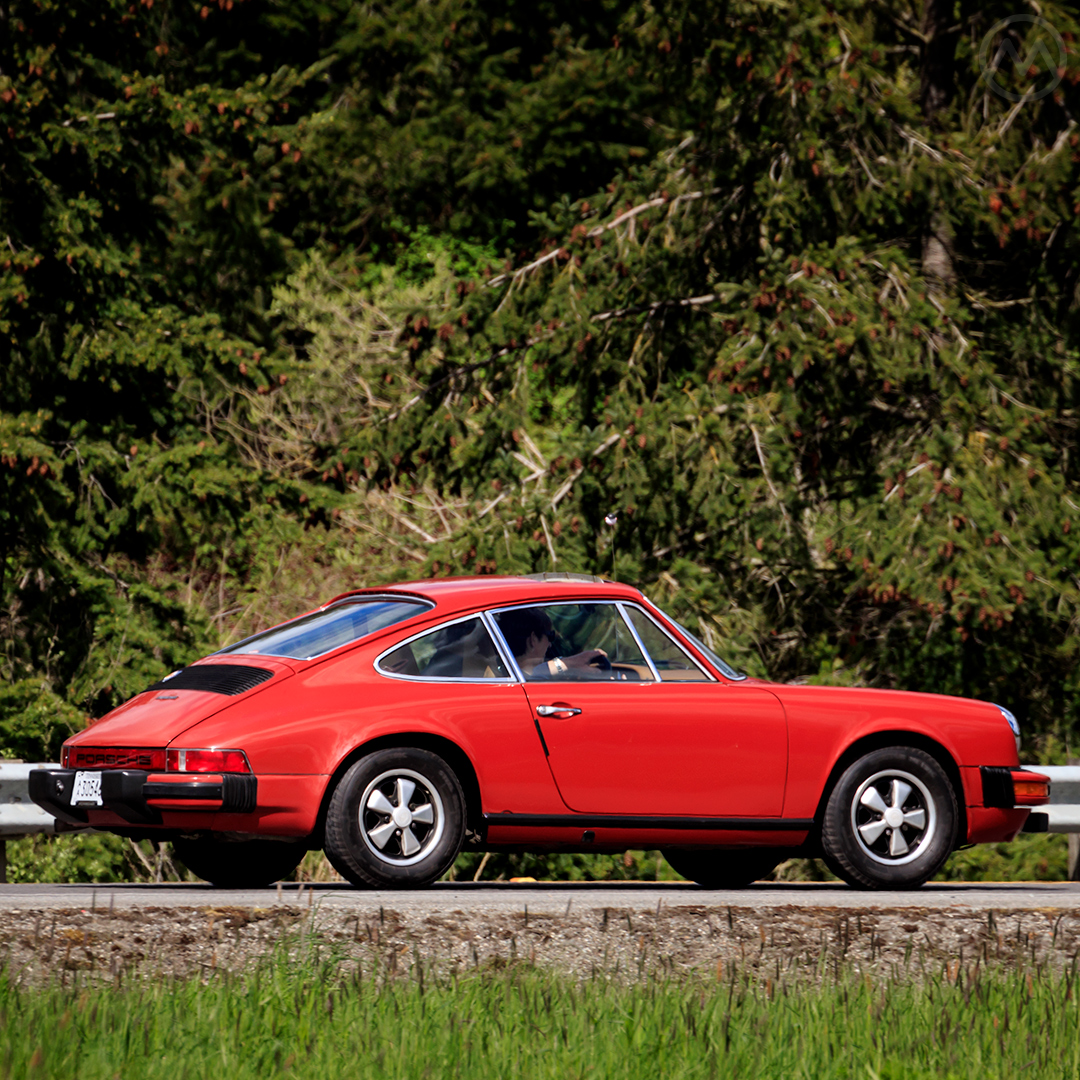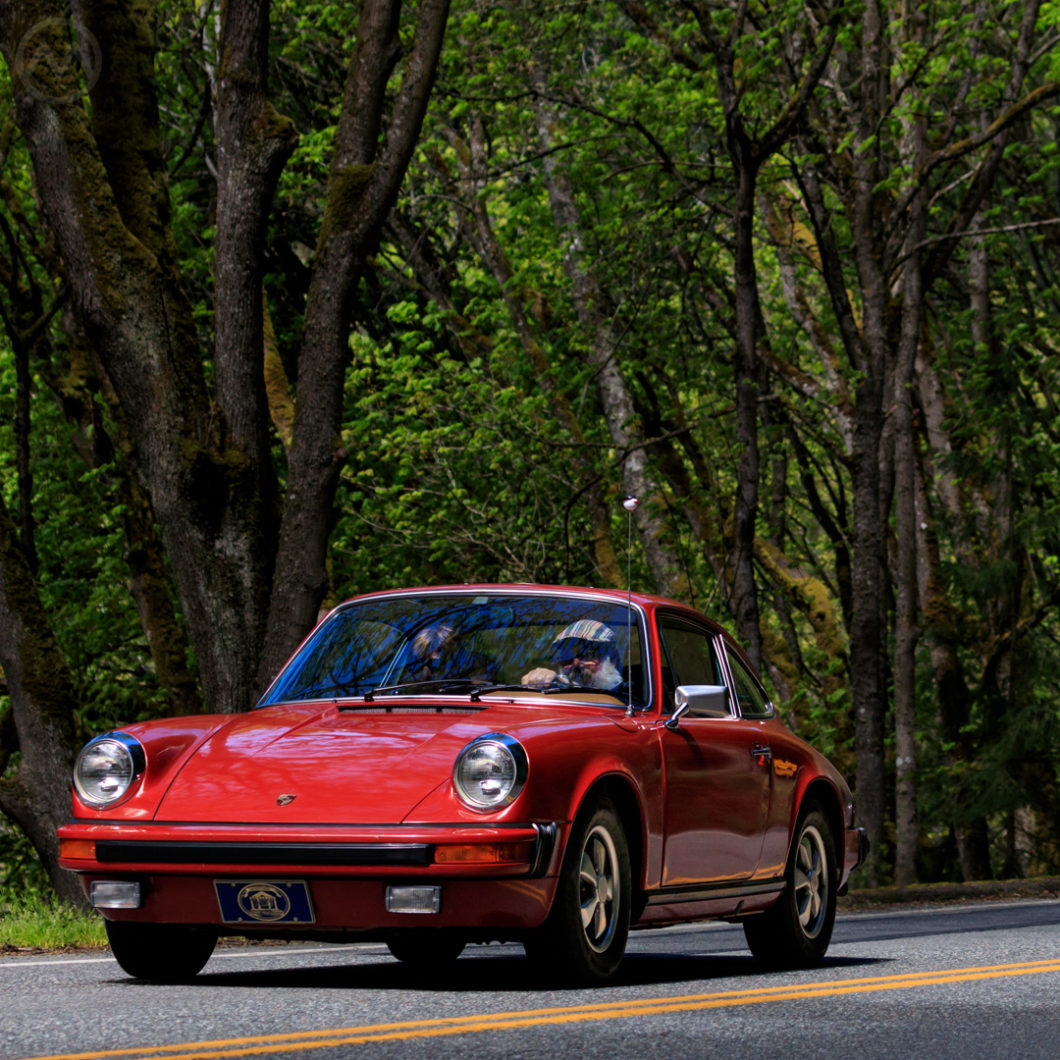It looks like a 911, yes, but this is a Porsche 912E, a combination of the 911 shell and the 914’s 2.0L flat four. This unusual Porsche was sold for just one year, 1976, and in just one market, the USA. Only 2,099 were made, and owner Ron S. related, in the day these photos were taken, that this Peru Red is car number 909.
The 912E is largely unknown to non-Porschephiles, both because of the low numbers and its stopgap nature. It was never meant to be a long-term offering, just cover the bases between the end of the 914 and the U.S. arrival of the 924. For this brief period, Stuttgart dusted off the old 912 name and concept and remade it.
The Original 912
The first 912 (offered from 1965 to 1969) was created to keep 356 customers who might have been priced out by the newer 911 in the fold. It combined the 911’s shell with the 356C’s four and a little less content at considerably lower price than the flat-six 911.
A decent seller, the “cheaper” 912 was still pricey for what it was. It cost more than a Corvette in 1967, though not quite as much as an E-type as some sources claim. Nevertheless, it was the most expensive four-cylinder sports car on the market, and .
The way forward for a lower-priced Porsche was the VW-Porsche 914 project, the development and marketing of which was a rollercoaster of arguments between the two related companies after a “handshake” deal between VW’s longtime CEO Heinz Nordhoff and Ferry Porsche evaporated after Nordhoff’s passing. The on-again/off-again, “Which brand will it be” saga of the 914 could easily have been a Werner Herzog screenplay, but the 914 did finally replace the 912 in late 1969.
Though sometimes looked down upon by Porsche fans when new and often plagued by rust, the 914 was a successful venture. When it came time to replace it, VW and Porsche were still closely linked and the drama repeated, if for different reasons. Porsche developed the 924 for VW as the EA425 project, but Volkswagen, in need of cash thanks to the Golf project, cancelled it. Porsche then unsuccessfully attempted to buy it back until Volkswagen’s new boss Toni Schmücker, who took over from Rudolph Leiding at VW in early 1975, found it expedient to make that happen.
914 production ended in December, 1975, but U.S. market 924s would not be ready until April, 1977 (Euro 924s were ready in Feb. of ’76). That left a big gap in U.S. Porsche stores, despite an extra production run of “1976” model year 914s at the very end of the model’s life.

The Porsche 912E
The solution? Bring back the 912 to fill the gap, even if just for a little while. A prototype was put together in the winter months of 1975 and was running by May. With all the components long since proven, it didn’t take long to finalize the product. It was built on the 911 line, so there was little interruption and almost no new tooling needed. The prototype, incidentally, was later sold to a German Doctor and driven regularly for the next 30 years.
Philosophically, this new 912 wasn’t so different from the original. Where the departed 356C’s engine was used in the 912, the 90-hp 2.0L flat four from the outgoing 914 was used in the 912E. The E was for “Einspritzung,” denoting the engine’s Bosch L-Jetronic fuel injection and revised systems that, despite the relatively low 7.6:1 compression ratio, meant the car developed 90hp on regular, not premium, gas.
When it arrived, just a 914 inventory was almost depleted, the Porsche 912E was priced at a towering $10,845 to start, more than $4,000 over the outgoing 914s. This, of course, was the same problem that the original 912 had. It was just an expensive car to make, and being mostly a 911, there was only so much cost that could be reduced. It was still $3,000 less than a 1976 911 S Coupe.
Having just 90 hp and actually weighing about 100 lbs. more than the 911, it wasn’t nearly as fast as its more famous sister. But overall, it was an excellent car. It had all of the 911’s virtues (quality, comfort, handling, style), but was also far less tail-happy, got great gas mileage (it has a 600-mile range by virtue of a huge 21-gallon gas tank), and cost far less to maintain.
It was a great all-rounder and a bit of a bargain despite its high price. Of course, it wasn’t meant to last.
Porsche’s last air-cooled 4-cyl, the car was put out to pasture in June, 1976 – around the time U.S.-spec 924s began to arrive at dealers in real quantity. This was just as Stuttgart intended. The practical nature and rarity of the Porsche 912E means they have a very high survival rate and, additionally, that many have been repatriated to the EU, joining the only one ever sold there officially – the prototype.

